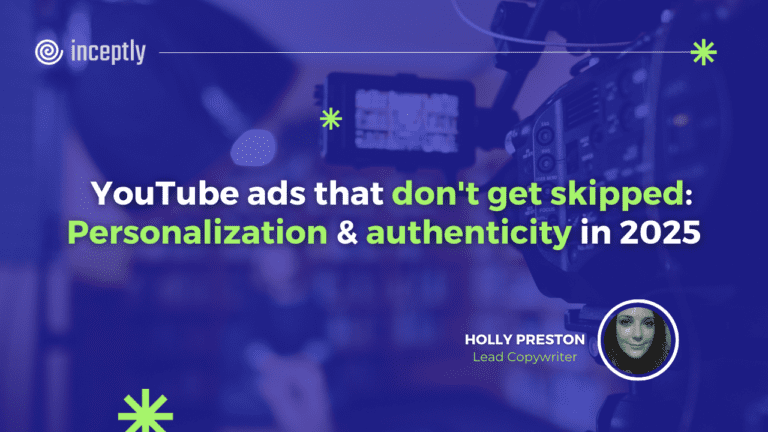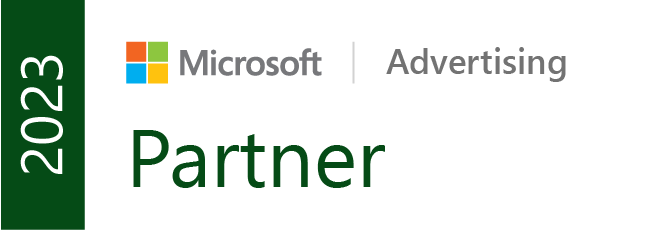
Let’s face it—most YouTube ads get skipped faster than you can say “five-second mark.” But not all of them. Some ads actually make viewers stop, watch, and even click. What’s their secret sauce?
After analyzing thousands of successful campaigns for our clients, we’ve found two ingredients that winning ads mix perfectly: they feel personally relevant and genuinely authentic.
No marketing speak. No corporate polish. Just ads that feel like they were made specifically for the viewer by actual humans who understand them.
Want to brainstorm with our team on new ways to scale your business with YouTube Ads (and other performance video platforms)?
Join us for a free YouTube ad brainstorming session👇
Why most ads fail (and what actually works)
When was the last time you willingly watched an ad all the way through? If you’re like most people, it probably happened when the ad:
Seemed to read your mind about a problem you have
Felt like it was made by real people, not a corporation
Offered something you actually wanted
But enough numbers. Let’s see how real brands are making this work.
Small brand, big results: How tuft & needle changed the game
Tuft & Needle entered the mattress industry with a fraction of the budget of giants like Sealy and Tempur-Pedic. They couldn’t outspend their competitors, so they had to outsmart them.
Their approach? YouTube ads that felt refreshingly honest.
While big mattress brands were using generic “sleep better” messaging with perfect-looking models on pristine beds, Tuft & Needle created ads showing real customers talking about why traditional mattress shopping is frustrating—the pushy salespeople, confusing models, and high markups.
“We wanted our ads to feel like a friend giving you honest advice, not a corporation selling you something,” says their marketing director.
Starting with a modest daily budget, they now allocate half their Google advertising to YouTube, with conversion rates that make traditional TV advertisers envious.
What made it work:
Their ads addressed specific frustrations their target audience experienced.
They used real customers instead of actors.
Their messaging contrasted directly with competitor clichés.
They showcased the actual people behind the company.
The personal connection: LSTN headphones' "Elevator Pitch" strategy
LSTN Headphones faced an uphill battle against giants like Beats and Bose. Their secret weapon? Making each ad feel like a personal introduction.
Instead of focusing solely on product features, LSTN’s YouTube ads opened with their unique social mission: “For every pair of headphones we sell, we help restore hearing to someone in need through the Starkey Hearing Foundation.”
From there, they segmented their audience and created different ad versions addressing specific viewer interests:
Audio enthusiasts received details on sound quality and materials.
Fashion-conscious viewers saw style and design elements.
Socially conscious consumers learned about their impact initiatives.
“We used video ads as an elevator pitch,” says founder Bridget Hilton. “Within the first 7 seconds, viewers knew exactly who we were and why our headphones mattered to them specifically”.
This approach helped LSTN turn YouTube into its most effective customer acquisition channel, outperforming much more expensive traditional media.
The key lessons:
They led with their “why,” not just their “what.”
They created multiple versions addressing different audience motivations.
They made viewers feel like participants in something meaningful, not just customers.
Real people over perfect shots: The authenticity factor
Both Tuft & Needle and LSTN discovered something crucial: in 2025, showing the humans behind your brand builds more trust than slick production.
Tuft & Needle regularly features their actual design team discussing product decisions. LSTN showcases footage from their hearing restoration missions alongside product demos.
This “behind-the-scenes” transparency consistently outperforms heavily scripted, perfectly polished content. Why? Because it feels real in a world of manufactured perfection.
Show your face: Have the actual founder or team members speak directly to the camera. Viewers connect with people, not logos.
Address specific problems: Instead of “our product is great,” try “if you’re struggling with [specific problem], here’s how we solve it.”
Segment your intros: Create multiple first-5-second hooks targeting different audience pain points, then test which resonates best.
Embrace imperfection: A genuine moment that feels slightly unpolished often outperforms a perfectly scripted line.
Let customers do the talking: Real testimonials—even simple ones—build more trust than any claim you can make about yourself.
The tech-human balance: Using AI without losing your soul
Both Tuft & Needle and LSTN use sophisticated targeting and testing tools, but they keep the creative process human.
“We use AI to help us understand what’s working and who we should target,” explains Tuft & Needle’s media buyer. “But we never let algorithms write our scripts or determine our brand voice. That stays human.”
LSTN takes a similar approach: “Technology helps us find the right viewers and test different messages efficiently,” says their marketing director. “But the stories we tell—those come from real experiences with our customers and the people we help.”
High-performing YouTube ad formats & testing framework
Top ad formats that work in 2025:
Skippable In-stream ads – Best for direct response, allowing viewers to skip after 5 seconds.
Non-skippable In-stream ads – Works for brand awareness but must be engaging throughout.
Bumper ads (6 seconds) – Great for quick, high-impact messaging.
YouTube Shorts ads – Growing in popularity, aligning with short-form video consumption.
How to A/B test effectively:
✅ Test different hooks – The first 5 seconds determine if viewers keep watching. Try multiple versions.
✅ Run ads on different audiences – Compare engagement rates across interest groups.
✅ Use multiple CTAs – See whether “Shop Now” or “Learn More” drives better conversions.
✅ Track key metrics – Focus on View-through rate (VTR), Click-through rate (CTR), and Conversions.
Common mistakes to avoid
🚫 Overuse of AI-generated content – It can feel robotic and impersonal.
🚫 Ignoring audience segmentation – One-size-fits-all ads underperform.
🚫 Weak CTAs – If you don’t clearly tell viewers what to do next, they won’t act.
🚫 Forgetting mobile optimization – Most YouTube views are mobile; format ads accordingly.
The bottom line: Be relevant, be real
The YouTube ads that work in 2025 understand that viewers aren’t just data points—they’re people looking for solutions that feel made for them, by actual humans who get them.
📌 Your assignment for your next campaign: Make it so relevant they think you’re reading their mind, and so authentic they feel like they know the real you.
Want to brainstorm with our team on new ways to scale your business with YouTube Ads (and other performance video platforms)?
Join us for a free YouTube ad brainstorming session:
Want more content like this?
Don’t miss out on the latest news and updates from the world of Direct Response advertising! Subscribe to our newsletter today 👇

Holly Preston, Lead Copywriter
Holly is behind most of Inceptly's successful creatives, supporting the team with her experience and imagination, making her an invaluable asset to Inceptly.
Like this post? Let's continue the conversation!
Get in touch with us by shooting us a quick email or tagging us on LinkedIn or Instagram, and sharing your thoughts. Your feedback helps us keep our blog relevant and interesting.
Get Our Newsletter
Need Help?
Get in touch with us for an insightful evaluation of your ads + actionable tips to help amp up your direct response revenue





